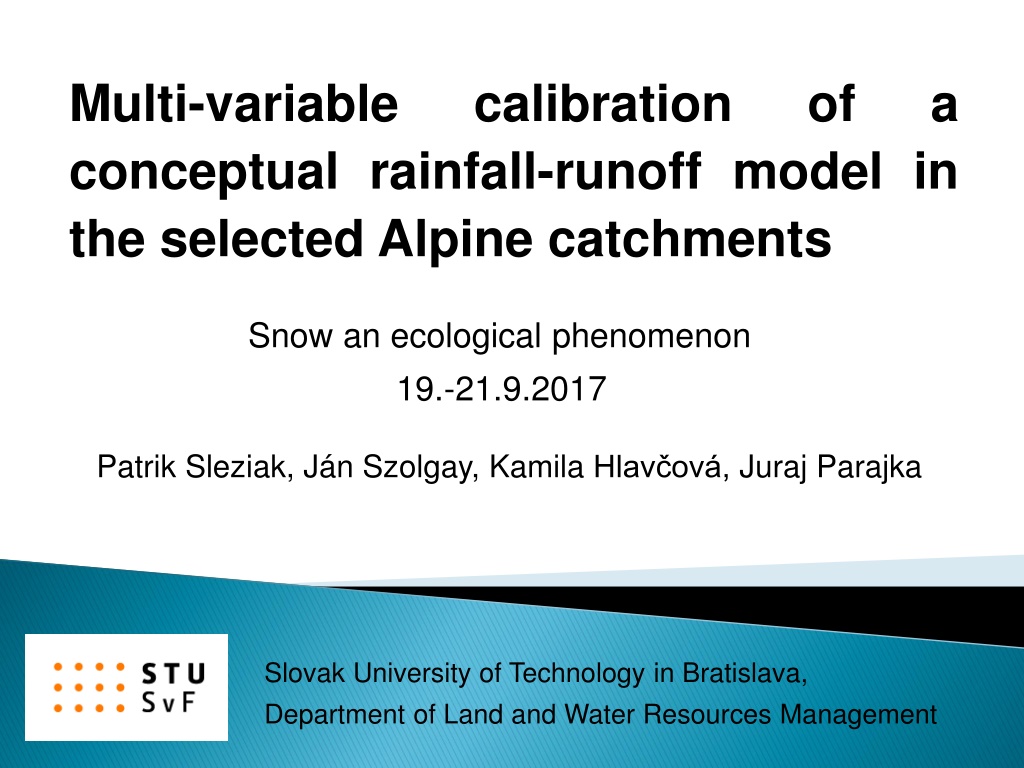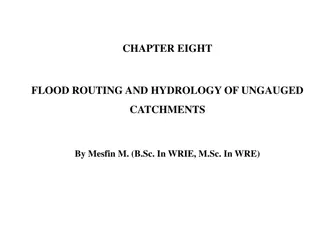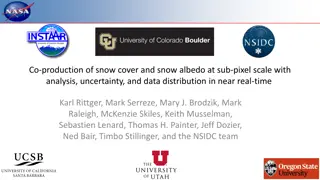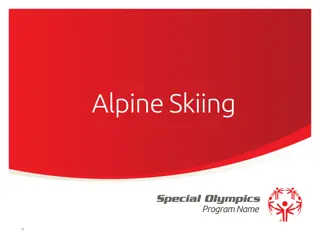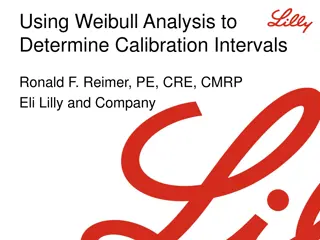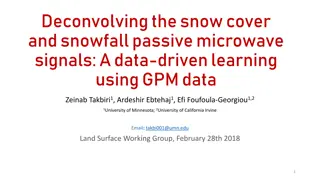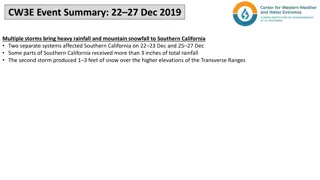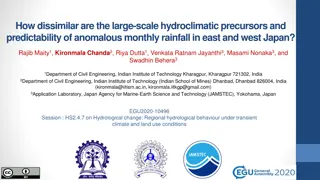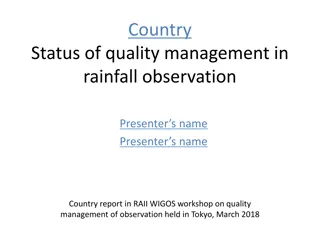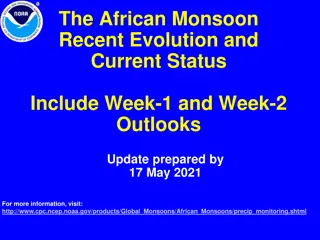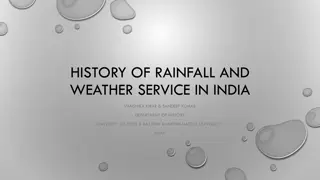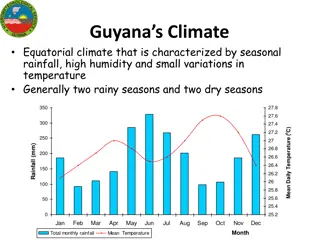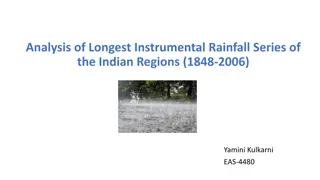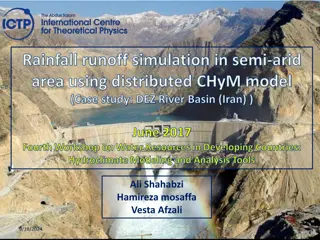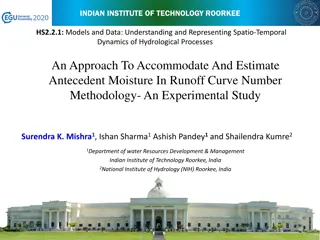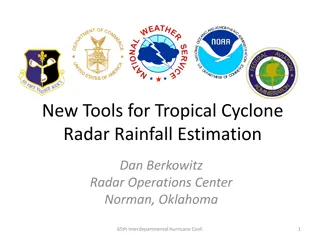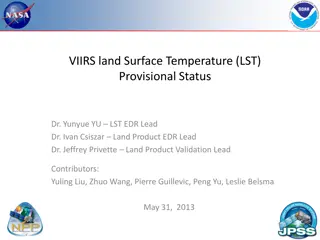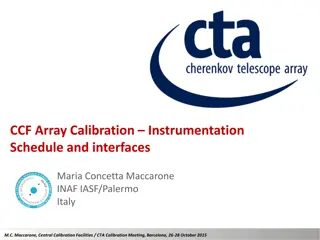Calibration of Multi-Variable Rainfall-Runoff Model Using Snow Data in Alpine Catchments
Explore the calibration of a conceptual rainfall-runoff model in Alpine catchments, focusing on the importance of incorporating snow data. The study assesses the benefits of using multi-objective approaches and additional datasets for model performance. Various aspects such as snow cover, groundwater, and soil moisture are considered in the calibration process. The research addresses key questions regarding the effectiveness of different objective functions and the model's simulation accuracy for streamflow and snow water equivalent. The study, conducted in Austria, showcases the application of the HBV type r-r model across multiple catchments, emphasizing the significance of snow in runoff generation processes.
Download Presentation

Please find below an Image/Link to download the presentation.
The content on the website is provided AS IS for your information and personal use only. It may not be sold, licensed, or shared on other websites without obtaining consent from the author. Download presentation by click this link. If you encounter any issues during the download, it is possible that the publisher has removed the file from their server.
E N D
Presentation Transcript
Multi-variable conceptual rainfall-runoff model in the selected Alpine catchments calibration of a Snow an ecological phenomenon 19.-21.9.2017 Patrik Sleziak, J n Szolgay, Kamila Hlav ov , Juraj Parajka Slovak University of Technology in Bratislava, Department of Land and Water Resources Management
In alpine (mountainous) regions snow is an important runoff generation process. In hydrological processes (e.g. SWE) in r-r models is crucial (data are sparse, etc.). these regions the correct parametrisation of One of the possible approach to overcome limitations is to use the additional data to calibrate models, e.g. groundwater data (Madsen, 2003), soil moisture data (Parajka et al., 2009), snow cover data (Parajka et al., 2007). 19.-21.9. 2017 2
To assess the effects of different objective functions (single-objective approach SINGLE and multi-objective approach MULTI) on the performance of the r-r model. Research questions: 1) What is the benefit of use of snow cover data in hydrologic model calibration? 2) Does a multi-objective approach perform better than a single-objective in terms of simulation of Q and SWE? 19.-21.9. 2017 3
conceptual HBV type r-r model, developed at TU Wien (Viglione a Parajka, 2014), 15 parameters, three modules: snow, soil moisture and runoff module (Merz, Bl schl, 2004). Fig. Scheme of the HBV model (Bergstrom, 1995). 19.-21.9. 2017 4
The study was carried out in Austria using daily data (P, T, EP, Q) from the period 1981 2010. 71 catchments, Area: 14 6214 km2, Elevation: 984 2915 m a.s.l., P: 1048 2313 mm/year, T: from -2.1 to 6.1 C, Q: 555 2662 mm/year. Fig. Map of Austria with the selected gauging stations and the selected pilot catchment. 19.-21.9. 2017 5
Tab. Scheme of the modelling. Period 1981-1990 1991-2000 2001-2010 1981-1990 Calibration Validation Validation 1991-2000 Validation Calibration Validation 2001-2010 Validation Validation Calibration DSST (Kleme , 1986), algorithm: Deoptim (Swagatam et al., 2011), performance assessment: NSE (Nash a Sutcliffe, 1970), VE (Merz et al., 2011), SN (Parajka et al., 2007). 19.-21.9. 2017 6
Objective function: ME = (NSE + logNSE)/2 Nash-Sutcliffe coefficient (NSE): 2 ? ? ? ??? = ?=1 ???? ???? ???? 2 ? ? ?=1 ???? Logarithmic Nash-Sutcliffe coefficient (logNSE): 2 ? ? ? ?????? = ?=1 ???(???? ) log(???? ) log( ????) ) 2 ? ? ?=1 ???(???? The goal of the combination: to achieve a balanced evaluation of high and low flows. 19.-21.9. 2017 8
Objective: to minimize the number of days when the model inaccurately simulated the duration of the snow cover. ?? =???????+ ?????? ???? ???????= ???? ???? > 2 ?? and ??? < 0.1 ?? ??????= ???? ???? < 0.1 ?? and ??? > 2 ?? ??????? number of days when the model underestimated the duration of snow cover, ?????? number of days when the model overestimated the duration of snow cover, ???? total number of days in the simulation period 19.-21.9. 2017 9
Multi-objective/variable function: ??????????????= 1 ?? ?? + ?? ?? ?? SINGLE (i.e. runoff) objective function (NSE + logNSE)/2 ?? snow related objective function (number of days with poor snow cover simulation) ?? weighting coefficient (optimised by trial and error, values: 0, 0.5, 0.75, 0.85, 0.9, 0.97, 1). The selection of ws depends on subjective user requirements and expectations. 19.-21.9. 2017 10
Model performance (NSE, VE, SN) for different calibration weights (i.e. ws 0, 0.5, 0.75, 0.85, 0.90, 0.97, 1) in three different calibration periods. Lines (in Fig.) represent the medians over 71 Austrian catchments. NSE 91-00 0.73 0.72 0.70 0.69 0.68 0.64 0.07 VE 91-00 -3.09 -3.99 -4.45 -4.96 -4.58 -5.15 -21.09 SN ws 0 0.5 0.75 0.85 0.9 0.97 1 81-90 0.74 0.72 0.70 0.69 0.67 0.65 0.08 01-10 0.72 0.71 0.70 0.68 0.67 0.63 0.21 81-90 -3.72 -4.43 -4.52 -5.04 -5.52 -5.65 -17.94 01-10 -3.09 -2.94 -3.50 -3.73 -3.73 -4.05 -22.42 81-90 91-00 01-10 6.06 4.92 3.70 3.10 2.42 2.27 2.30 1.97 2.20 1.88 2.21 1.82 2.09 1.85 6.81 5.88 5.25 5.16 4.99 4.63 4.63 16.08. 2017
The MULTI approach was beneficial in the simulations of the SWE (slightly poorer values in terms of simulating Q). Fig. Observed and simulated Q (top panel, left and right) and observed Snow depth and simulated SWE (bottom panel, left and right) for one year averaged over periods 1981 1990 and 2001 2010 (SINGLE approach left panel, MULTI approach right panel). 19.-21.9. 2017 13
TUW model was calibrated for three climatically contrasting periods between 1981 2010 for 71 alpine catchments (one selected catchment) in Austria. Two optimization functions (SINGLE and MULTI) were designed. The calibration results were evaluated in terms of NSE, VE, SN. We found that: The model tended to systematically underestimate the volume of flows. The results also showed that the use of snow cover data in the calibration (the MULTI approach) improved the model performance in terms of simulating snow (i.e. SWE) (the model performance in terms of simulating runoff was slightly poorer). These results are in general agreement with the findings presented e.g., by Seibert, 2000; Madsen, 2003; Parajka et al., 2007. 19.-21.9. 2017 14
The use of various data (e.g. SWE, snow cover, etc.) in multi- objective calibration can be a good way to improve representation of hydrological processes (e.g. in alpine regions, where data are sparse and the spatial variability of the hydrological environment is enormous). Recommendations for practical applications of r-r models (in the climate change context) : To re-calibrate the conceptual r-r models (e.g. type of HBV and its derivatives) if the climatic conditions change. a) To consider various calibration periods and the change the model parameters depending on the hydroclimatic regime. b) 19.-21.9. 2017 15
